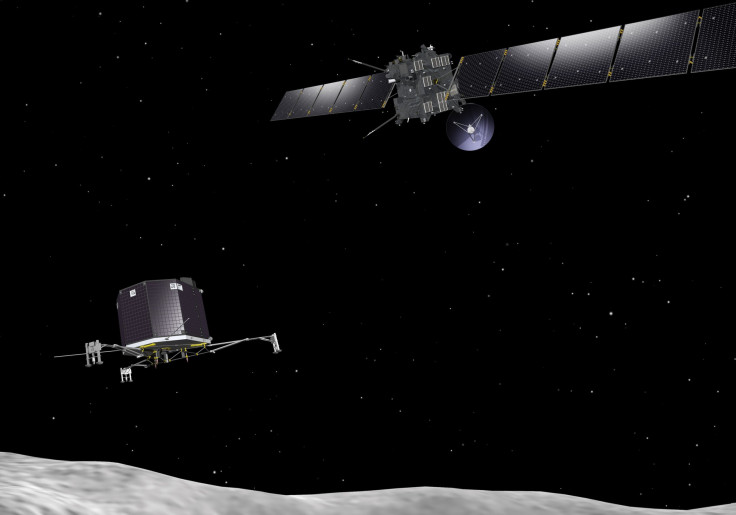‘Wake Up Rosetta’: European Space Agency’s Comet-Hunting Satellite Gets Ready For Historic Mission
The European Space Agency’s Rosetta satellite is currently hibernating, but the alarm clock is set for Jan. 20. The “Wake Up Rosetta” campaign is just the beginning for the ESA’s satellite as it plans to rendezvous with a comet in 2014.

According to NASA, six comets have been observed by spacecraft, but Rosetta would be the first to actually land on a comet and do more than just a “flyby.” Rosetta was launched on March 2, 2004, and after several Earth gravity assists, the satellite entered hibernation on June 8, 2011. ESA has made sure Rosetta’s wakeup call is a special one as it has set up an international media campaign that includes video submissions and a dedicated Facebook page.
After Rosetta wakes up from hibernation, it will begin its journey to comet 67P/Churyumov–Gerasimenko. After its first major comet rendezvous maneuver, scheduled for May 2014, it will arrive at the comet in August. Rosetta will trail the comet as it orbits around the sun, but ESA’s most important mission will be deploying the Philae lander in November.
NASA will help ESA with the Rosetta as the satellite includes three scientific instruments developed by the U.S. space agency. The comet hunter's payload includes 21 scientific instrument packages, 11 on the satellite itself and 10 on the Philae lander. According to the ESA, Rosetta "carries instruments for remote sensing and radio science, and instruments to study the composition, mass distribution and dust flux of the comet’s nucleus, as well as the comet plasma environment and its interaction with the solar wind."
Rosetta will see some dramatic changes in comet 67p over the course of 16 months. "Old 67P is expected to transform from a small, frozen world into a roiling mass of ice and dust, complete with surface eruptions, mini-earthquakes, basketball-sized, fluffy ice particles and spewing jets of carbon dioxide and cyanide," said NASA in a statement.
Scientists from around the world have worked on Rosetta since 1993, and this level of international cooperation will continue as the satellite rendezvous with the comet. Sam Gulkis, from NASA's Jet Propulsion Laboratory and principal investigator for the NASA-designed MIRO, the Microwave Instrument for the Rosetta Orbiter, said the scientific instruments "will all work together to create the most complete picture of a comet to date, telling us how the comet works, what it is made of, and what it can tell us about the origins of the solar system."
A video discussing the history of spacecraft chasing comets, courtesy of ESA, can be viewed below.
© Copyright IBTimes 2025. All rights reserved.






















